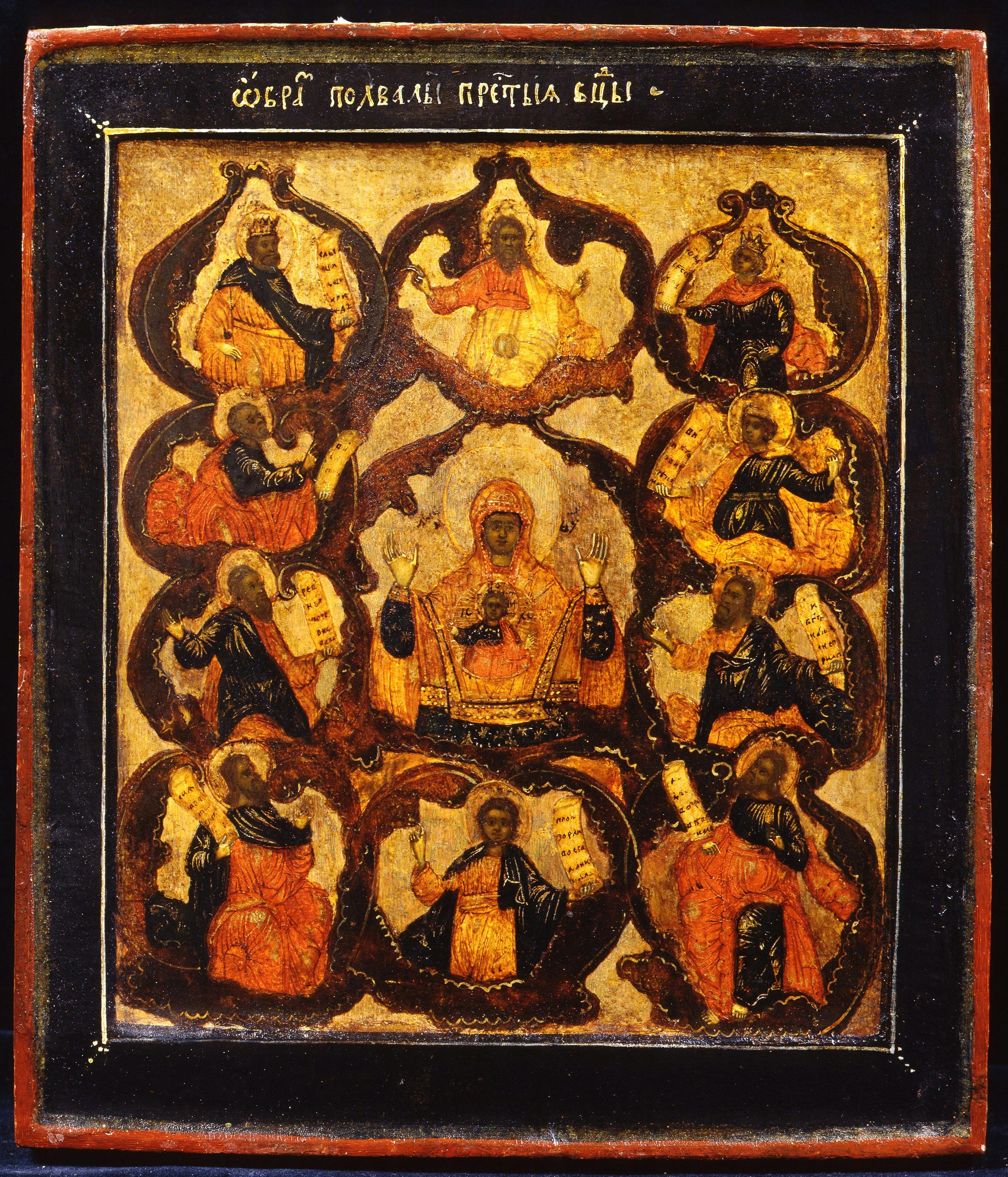Kursk Mother of God
Central Russia
In the centre of the icon, the Mother of God is depicted in prayer, with her hands raised skywards, with Christ Emmanuel, the anticipated Messiah, on her lap; in Russia, this kind of iconography became known as Our Lady of the Sign, named after a miraculous icon, kept in Novgorod in the 12th century. In the Uffizi painting, a winding plant outlines eight medallions surrounding the Virgin, showing God the Father in the middle at the centre and then, from top left working clockwise: the prophets David, Moses, Elijah, Gideon (?), Habakkuk, Isaiah, Jeremy, Daniel, and Solomon.
The title of the icon is “ОБРАЗ ПОХВАЛЫ ПРЕС(ВЯ)ТЫЯ Б(ОГОРО)Д(И)ЦЫ” (Praise of the Holy Mother of God Icon), referring to a composition depicting the Virgin and the prophets as they predict the incarnation of the Son of God. However, the subject of the Florentine icon is mostly reminiscent of that of the Kursk Root Icon of the Lady of the Sign. According to tradition, on 8 September 1295, an icon of the Lady of the Sign was unearthed from among the roots of a tree near the city of Kursk; following many miracles that made the icon highly venerated, the cathedral of the Lady of the Sign (Znamensky) was built in the city. The icon remained there until 1918, surrounded by medallions with images of God the Father and the prophets.
The Florentine version therefore appears to be a combination of two different iconographic styles and can be attributed to the same provincial area of central Russia that produced most of the icons in the Uffizi collection in the first decades of the 18th century.
